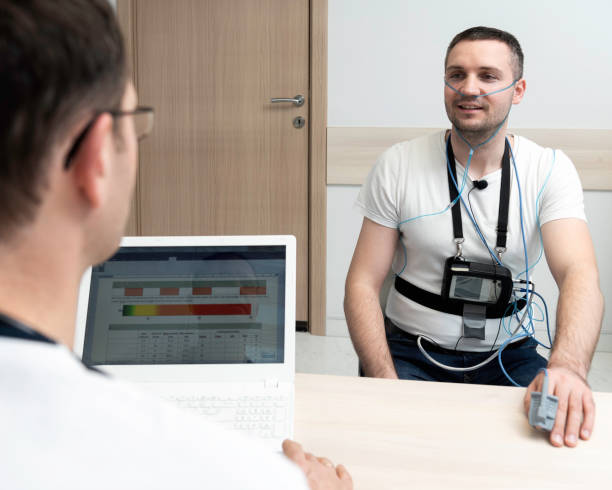Pneumothorax, commonly known as a collapsed lung, occurs when air collects in the pleural space, the area between your lungs and chest wall. This condition can impair your breathing and requires immediate attention. Auscultation, or listening to chest sounds using a stethoscope, is a vital method for diagnosing pneumothorax.
What Happens During Auscultation of Pneumothorax?
When a doctor uses a stethoscope, they listen for abnormalities in your breath sounds. A normal lung produces clear breath sounds during inhalation and exhalation. However, with pneumothorax:
- Breath sounds are reduced or absent over the affected lung.
- In severe cases, such as tension pneumothorax, there might be no sound at all on one side.
These findings guide the doctor in identifying the affected lung and deciding the next steps for treatment.
Understanding the Types of Pneumothorax
Pneumothorax can be categorized into three main types:

1. Closed Pneumothorax
- This occurs when air leaks into the pleural space without any external wound.
- It often results from internal injuries, such as lung disease or a ruptured air sac (bleb).
- Symptoms include chest pain, shortness of breath, and reduced breath sounds.
2. Open Pneumothorax
- In this type, an open wound in the chest wall allows air to move freely in and out of the pleural space.
- It is also called a “sucking chest wound” due to the audible noise as air enters.
- Immediate treatment involves sealing the wound to prevent more air from entering.
3. Tension Pneumothorax
- This is the most severe form, where trapped air builds up pressure inside the chest.
- It compresses nearby organs, including the heart and major blood vessels, leading to a life-threatening situation.
- Symptoms include severe breathlessness, a shifted trachea, and a distended neck vein.
| Type | Key Feature | Urgency Level |
| Closed Pneumothorax | Internal air leak, no external wound. | Moderate to high (depends on size). |
| Open Pneumothorax | Visible chest wound with air movement. | High (immediate attention). |
| Tension Pneumothorax | Trapped air causes pressure on the lungs and heart. | Critical (life-threatening). |
Causes of Pneumothorax
Several factors can lead to pneumothorax. Understanding the cause helps prevent future incidents.
1. Trauma
- A fractured rib, gunshot wound, or stab injury can puncture the lung.
- High-impact sports or accidents are common culprits.
2. Medical Procedures
- Invasive procedures, such as lung biopsies, central line placement, or mechanical ventilation, may unintentionally cause pneumothorax.
3. Spontaneous Causes
- Tall, thin individuals or smokers are at higher risk of primary spontaneous pneumothorax, which occurs without a clear cause.
- Secondary spontaneous pneumothorax is linked to lung diseases like COPD, asthma, or cystic fibrosis.
4. Lung Diseases
- Chronic conditions weaken the lung structure, making them prone to air leaks.
Pathophysiology of Pneumothorax
The pleural space normally has negative pressure, which keeps your lungs inflated. When air enters this space, it disrupts the balance.
- The lung collapses partially or completely, depending on the amount of air leakage.
- The collapsed lung reduces oxygen exchange, causing breathlessness.
- In tension pneumothorax, air pressure builds up with each breath, pushing the heart and other organs to one side.
Signs and Symptoms of Pneumothorax
Recognizing the symptoms can save lives.

- Sudden chest pain on one side.
- Shortness of breath.
- Rapid heart rate.
- Tracheal deviation (in severe cases like tension pneumothorax).
- Reduced or absent breath sounds during auscultation.
Diagnosis Methods for Pneumothorax
Doctors use various tools to confirm the diagnosis:
- Auscultation: Reduced or absent breath sounds indicate a collapsed lung.
- Chest X-ray: Identifies the size and location of the pneumothorax.
- CT Scan: Offers a detailed view of complex cases.
- Ultrasound: Useful in emergency settings for quick detection.
Pneumothorax Treatment Options
The treatment depends on the severity and type of pneumothorax:
| Treatment | How It Works | Used For |
| Observation | Small pneumothoraxes may resolve on their own with rest and monitoring. | Closed pneumothorax (minor cases). |
| Needle Aspiration | A needle is used to remove air from the pleural space. | Moderate cases of closed pneumothorax. |
| Chest Tube Insertion | A tube is inserted to continuously drain air, allowing the lung to re-expand. | Severe cases of tension pneumothorax. |
| Surgery | Surgical intervention may seal leaks or repair lung damage. | Recurrent or severe pneumothorax. |
| Wound Sealing (Open Pneumothorax) | A sterile dressing is applied to prevent air from entering. | Open pneumothorax. |
Comparison of Open and Closed Pneumothorax
| Feature | Open Pneumothorax | Closed Pneumothorax |
| Cause | External wound allows air to enter. | Internal air leaks without a wound. |
| Symptoms | Audible “sucking” sound, chest pain. | Chest pain, shortness of breath. |
| Treatment | Seal the wound, and insert a chest tube. | Observation, air drainage, or surgery. |
Why Early Detection Matters
Untreated pneumothorax can cause life-threatening complications. Conditions like tension pneumothorax can lead to cardiac arrest or organ failure due to the pressure on vital structures. Early auscultation and diagnosis are critical for timely intervention.
Conclusion: Why Learn About Auscultation of Pneumothorax?
Understanding the auscultation of pneumothorax helps you recognize a potentially life-threatening condition. Whether it’s a closed pneumothorax, open pneumothorax, or tension pneumothorax, quick diagnosis and treatment are crucial. The use of simple tools like a stethoscope can save lives.
If you experience symptoms like sudden chest pain or difficulty breathing, consult a doctor immediately. Early action ensures better outcomes and quicker recovery.


